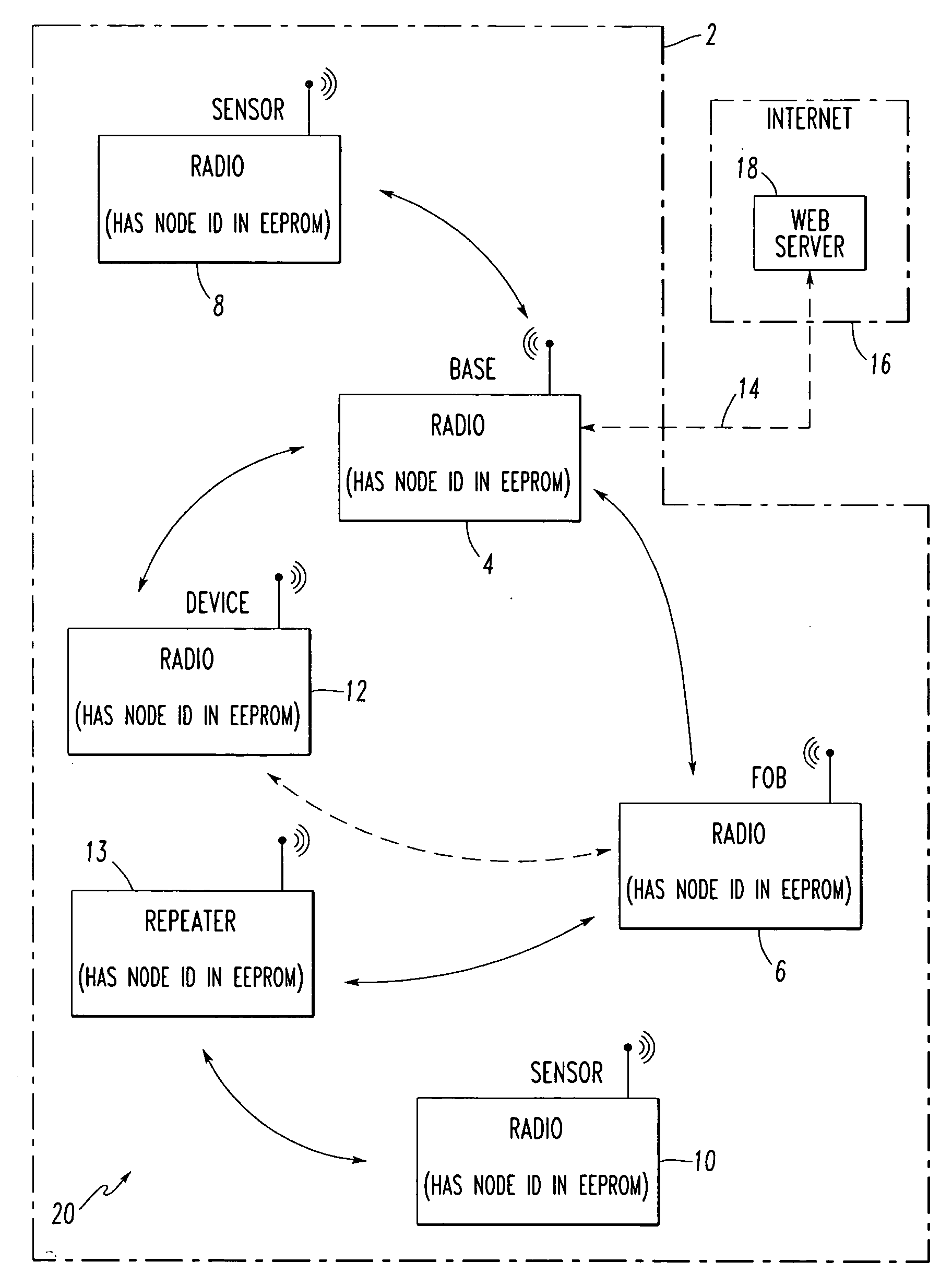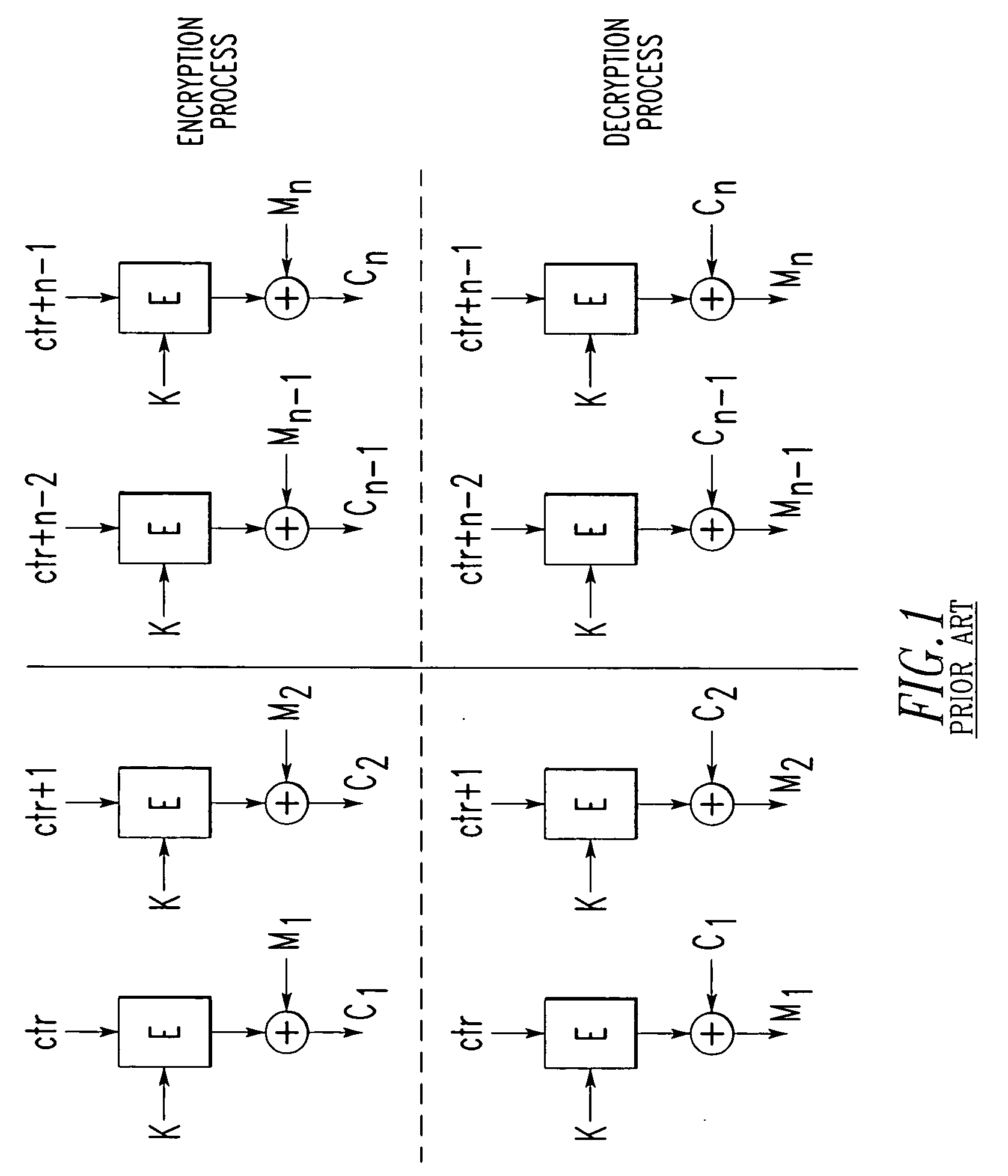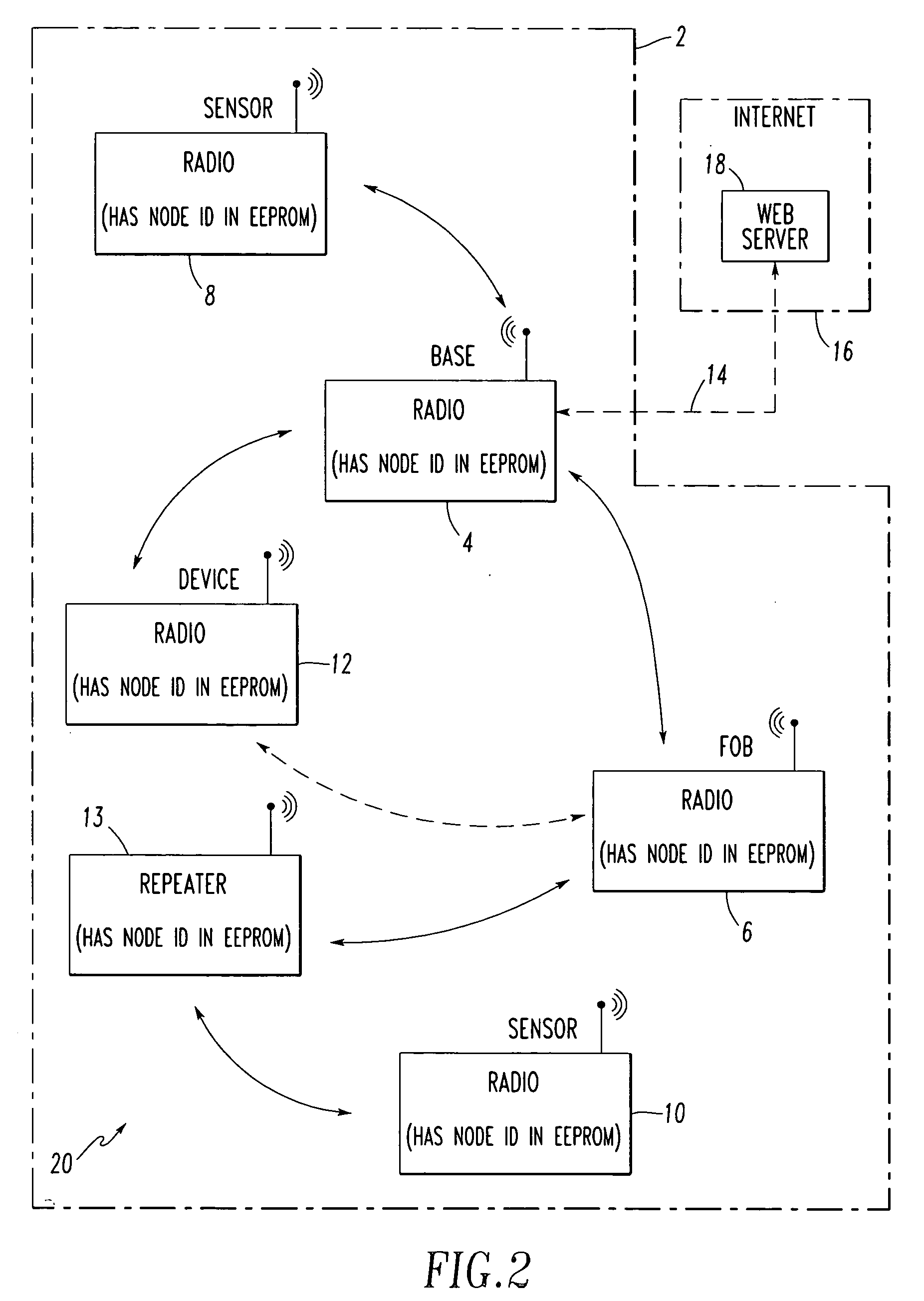Method and communication system employing secure key exchange for encoding and decoding messages between nodes of a communication network
- Summary
- Abstract
- Description
- Claims
- Application Information
AI Technical Summary
Benefits of technology
Problems solved by technology
Method used
Image
Examples
example 1
[0074]FIG. 4A shows an example of another fob 51, which may be the same as or similar to the fob 6 of FIG. 2, and a wireless system component 52 (e.g., a sensor 8,10; a base station 4; a device 12; a repeater 13), which are suitably mated for configuration of the system component 52 and / or the fob 51. The fob 51 includes a training / mating switch 54. The component 52 includes a surface or protrusion 56, which is designed to engage the switch 54. The component 52 also includes a training / mating switch 58 having an actuator 59. The fob 51 includes a protrusion or surface 60, which is designed to engage the switch actuator 59. Initially, the fob 51 is slid into the component 52. For example, the fob 51 includes an engagement portion (not shown) having a tongue (not shown), while the component 52 has a corresponding mating engagement recess (not shown) with a corresponding groove (not shown). As the component protrusion 56 approaches the fob switch 54, it engages and activates an actuato...
example 2
[0075]FIG. 4B shows an example of the sensor / base / device program switch 64 of a fob 66, and the sensor program switch 68 of a sensor 70. The fob 66 includes a case or enclosure 72 having an opening 74, a protrusion 76 and a printed circuit board 78 therein. The sensor / base / device program switch 64 is proximate the opening 74, and the sensor program switch 68 is on a printed circuit board 80 and proximate the opening 82 of the sensor case or enclosure 84. Whenever the fob 66 is suitably mated with the sensor 70, the fob protrusion 76 passes through the sensor opening 82 and engages the sensor program switch 68. At the same time, whenever the sensor 70 is suitably mated with the fob 66, the sensor protrusion 86 passes through the fob opening 74 and engages the sensor / base / device program switch 64.
example 3
[0076] As an alternative to the switches 64,68 and protrusions 76,86 of FIG. 4B, suitable proximity sensors (PS) 88,90 and targets (T) 92,94 may be employed as shown with the two nodes 96,98 of FIG. 4C. For example, the proximity sensors 88,90 are activated and deactivated whenever the node 96 is respectively suitably proximate to and distal from the node 98.
[0077]FIG. 5 shows an example sequence of events 100 employed to encode and decode messages between nodes, such as, for example, the fob 6 and the base station 4 of the communication network 20 of FIG. 2. First, at 102, a first node, such as the fob 6, is mated with a second node, such as the base station 4. Then, at 104, a time duration of the mating is determined in the first node and, at 106, the (same) time duration of the mating is determined in the second node. Next, at 108, an encryption key is generated based upon the time duration in the first node. Then, at 110, the (same) encryption key is generated based upon the (s...
PUM
 Login to View More
Login to View More Abstract
Description
Claims
Application Information
 Login to View More
Login to View More - R&D
- Intellectual Property
- Life Sciences
- Materials
- Tech Scout
- Unparalleled Data Quality
- Higher Quality Content
- 60% Fewer Hallucinations
Browse by: Latest US Patents, China's latest patents, Technical Efficacy Thesaurus, Application Domain, Technology Topic, Popular Technical Reports.
© 2025 PatSnap. All rights reserved.Legal|Privacy policy|Modern Slavery Act Transparency Statement|Sitemap|About US| Contact US: help@patsnap.com



